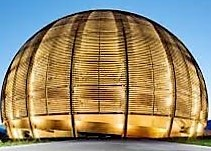Speaker
Description
The study of heavy-ion fusion reactions of light systems is essential for the understanding of the astrophysical reaction networks responsible for the energy production and elemental synthesis in stellar environments. At far sub-barrier energies, fusion is influenced by the hindrance phenomenon [1]. Fusion of light heavy-ions is characterised by a positive Q-value and establishing the presence of hindrance in such systems requires challenging measurements. In the two relevant cases 12C+12C and 16O+16O the available data give indication of the existence of hindrance, but the situation is far from being well established, especially for 12C+12C fusion where the several resonances observed [1], make very controversial any conclusion. The study of slightly heavier systems is then appealing, because their low-energy fusion trend may provide a reliable guidance for the extrapolation to the lighter cases of astrophysical interest.
We have measured [2] the fusion excitation function (and consequently the S-factor) for the system 12C+24Mg, using the magnesium beam from the XTU Tandem accelerator of INFN-LNL and 50 micro-g/cm2 12C targets enriched to 99.9% in mass 12, down to around sigma_fus=4.7 micro-b. Fusion hindrance shows up because the S-factor displays a well-defined maximum vs energy below the barrier aroundsigma_fus=1 mb. It is remarkable that the lowest cross sections are consistent with a simple one-dimensional barrier penetration calculation. The S-factor trend is well reproduced using an empirical formula in the spirit of the adiabatic model [3], as well as using the phenomenological hindrance model [4].
Measurements at energies slightly below the present ones are in schedule and will allow a deeper insight into the fusion dynamics far below the barrier. Far-reaching consequences may be envisaged for the lighter systems relevant for astrophysics.
[1] C.L.Jiang et al., Eur. Phys. J. A57, 235 (2021)
[2] G.Montagnoli et al., Phys. Rev. C101, 044608 (2020), and submitted to J.Phys. G
[3] T. Ichikawa, K. Hagino and A. Iwamoto, Phys. Rev. C75, 057603 (2007)
[4] C.L. Jiang et al., Phys. Rev. C75, 015803 (2007)




